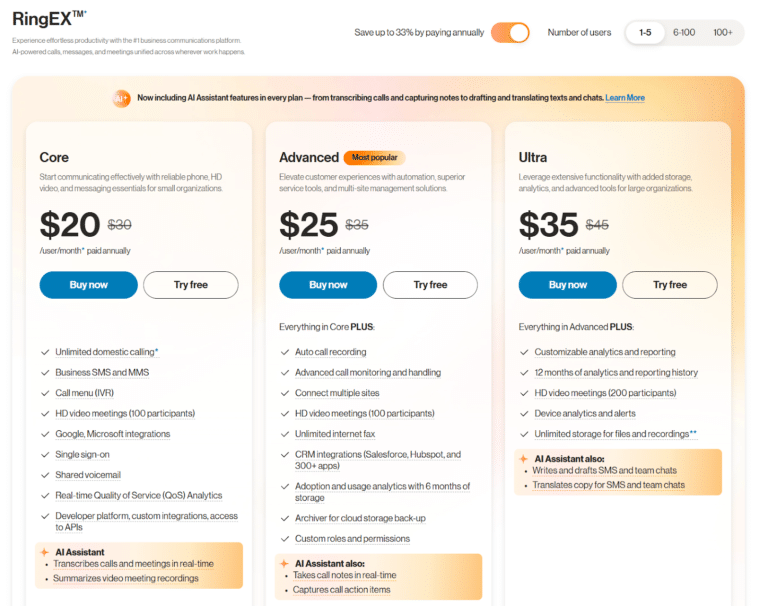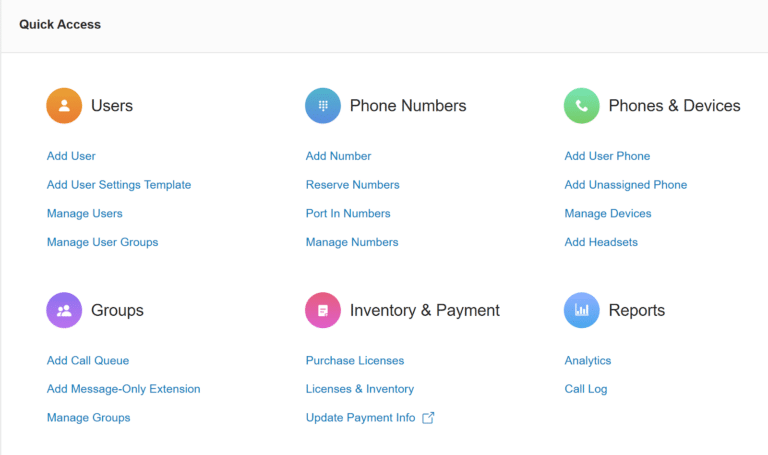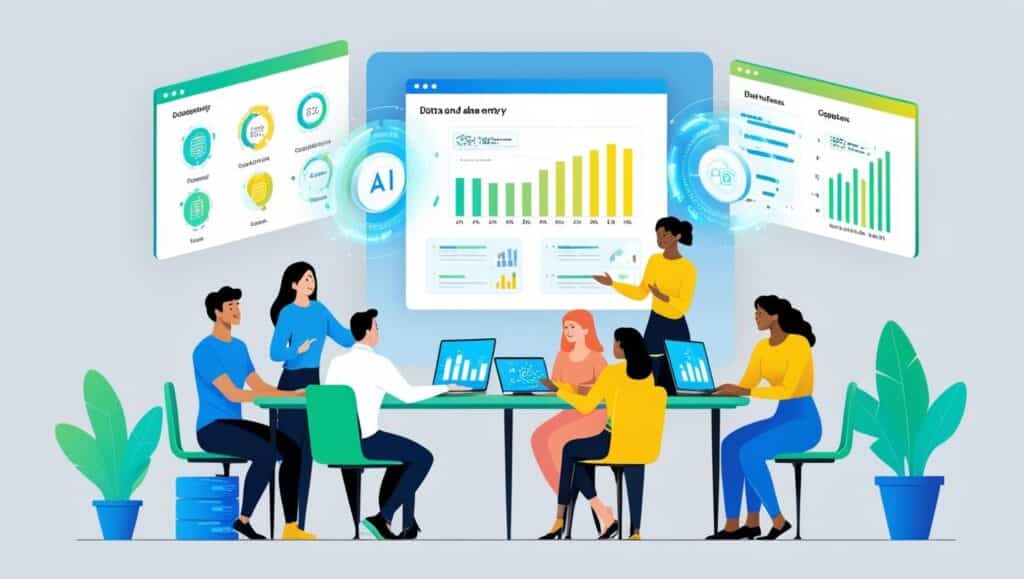The most crucial tool for any remote call center is the communication software itself.
You’ve got to give your agents something that’s easy to use so they can actually, you know, call people! Think about it: if the software is clunky or difficult to navigate, your agents will be less efficient, and customer satisfaction will likely take a hit.
In my experience, RingCentral really stands out as the best platform for this. I’ve tried a few different options, and RingCentral consistently comes out on top in terms of features, reliability, and ease of use.
Setting it up is pretty straightforward. You just create an account, add your users, and you’re pretty much good to go. The interface is intuitive, so you won’t waste a lot of time trying to figure things out.
They have a few different pricing options to choose from, which is nice because it allows you to select a plan that best fits your specific needs and budget.
Personally, I’d recommend going with their advanced package. It’s got all the features a call center really needs to operate efficiently.

One thing that’s super important for any call center is the auto call recording feature. With RingCentral, you just remember to turn this on whenever you add a new agent.
Once it’s enabled, RingCentral automatically logs every call the agent makes. This is invaluable for quality control, training, and compliance purposes. Also, the advanced call monitoring and handling features are crucial. If an agent is on a call and needs help, you can jump in and assist them without the customer even knowing.
This feature lets you basically whisper in their ear! You can give them advice or tell them what to say, and the other person on the line won’t have a clue. It’s an incredibly useful tool for training new agents or helping experienced agents handle difficult situations. You can access it with a single click, which is very convenient.
The CRM integration is also a huge plus. With this, you often don’t even need to log in to RingCentral separately, which streamlines your workflow. For example, I was able to manage everything directly from Zoho, and I could even listen to calls from the lead card. The integration pulls in all the important stuff, like reports, call logs, and customer info, giving you a centralized view of your customer interactions.
RingCentral also lets you choose a phone number from a wide selection of cities and countries, which is great. This allows you to establish a local presence in different markets. And the call quality is excellent; I haven’t had any problems with it. Clear communication is essential for effective customer service, and RingCentral delivers on this front.
RingCentral has also recently added some cool AI-powered features, which is exciting. These can really help both you and your agents during calls. For example, they can transcribe the calls in real-time and provide closed captioning. This can improve accessibility and provide a written record of the conversation.
Another great AI feature is that it can take real-time notes, which you, as a manager, can see while your agents are on the phone. This can help you stay informed about the call’s progress and provide more effective coaching.
And if you get an inbound call that goes to voicemail, the system will send you an email notification with the voicemail message transcribed. This is a huge time-saver! Instead of having to listen to the entire voicemail, you can quickly scan the transcription and then immediately assign the call to an agent to call the customer back.
Here are some of the key features that RingCentral offers:
RingCentral’s call center solutions come with a ton of features and benefits that can really change how businesses interact with their customers:
- Omnichannel Communication for your remote call center: RingCentral lets you connect with customers through a variety of channels, including voice, chat, email, SMS, and social media. This is essential these days, as customers expect to be able to reach you through whatever method is most convenient for them. Providing this flexibility can significantly improve customer satisfaction.
- Intelligent Call Routing: This ensures that calls are sent to the agent who is best qualified and available to handle them, which reduces wait times and improves the chances of the customer’s issue being resolved on the first call. RingCentral’s system analyzes things like caller ID, CRM data, and agent skills to make the best match, ensuring efficient and effective call handling.
- Agent Empowerment Tools: RingCentral gives agents the tools they need to succeed, such as CRM integrations, knowledge bases, and real-time performance metrics. This helps them provide better, more personalized support. For example, CRM integrations give agents instant access to customer information, so they can tailor their responses and build rapport with customers.
- Analytics and Reporting: RingCentral provides detailed analytics that give you valuable insights into your call center’s performance. This allows you to identify areas where you can improve and optimize your operations. You can track everything from basic metrics like call volume and wait times to more advanced metrics like customer satisfaction and agent performance. These insights can help you make data-driven decisions to improve efficiency and effectiveness.
- Cloud-Based Flexibility: RingCentral’s cloud-based platform means your agents can work from anywhere with an internet connection. This is perfect for remote teams and distributed workforces. It also allows businesses to adapt to changing needs and scale their operations up or down as needed, providing a high degree of agility.
RingCentral offers solutions for both inbound and outbound call centers:
- Inbound Call Centers: RingCentral helps businesses provide excellent customer support with tools for efficient call handling, queue management, and issue resolution. Features like automatic call distribution (ACD), interactive voice response (IVR), and skills-based routing ensure that calls are handled efficiently and effectively, leading to improved customer satisfaction.
- Outbound Call Centers: RingCentral provides tools like predictive dialing, campaign management, and list segmentation to help outbound call centers maximize agent productivity and drive sales. Predictive dialing, for example, automatically dials numbers and only connects agents when someone actually answers, which saves a lot of time and increases agent efficiency.
Setting everything up is pretty easy. The whole process is designed to be user-friendly, so you can get your call center up and running quickly.

After you purchase the software, you just set up your account and add your users. The agents will find it very easy to get connected and start making calls.
They can download a softphone to make calls, or they can integrate it with their CRM. The integration process is straightforward and allows you to easily monitor your agents’ daily work. This gives you valuable insights into their activity and performance.
You can see how many calls they’re making, at what times, and make sure they’re actually making calls and not wasting time. I integrated it with Zoho CRM, which I’ll talk about in another article. When you work with RingCentral, make sure you have all your company information handy. This will ensure a smooth setup process. RingCentral can also assign your company a phone number with your company name on the caller ID. This is great for building credibility and trust when you call people. The home screen gives you quick access to everything you need to update, and the platform is designed to be user-friendly.
RingCentral also has a great analytics section where you can monitor calls in detail. If you need to listen to a specific call, you can just click on the call log and enter the number. Their numbers are legitimate and not spam, so you can feel comfortable choosing a number from any city in the US.
The only real issue I had was when calling through the Zoho integration. The system would sometimes freeze and not work smoothly. When this happened, I had the agent download the softphone and make the call from there. This didn’t happen very often, though, and most of the time everything worked fine. We did contact Zoho support, and they resolved the problem.
The other thing I found a bit annoying is that you can’t downgrade to fewer agents online. You have to contact your account manager to do that. I found this frustrating because call centers often need to change their headcount, and you don’t always have time to wait for someone to get back to you. You want to be able to do everything quickly and manage it all online.
Overall, though, I found their platform to be super user-friendly and easy to use. It’s a solid choice for any business looking for a reliable and feature-rich call center solution.
I’m excited about the future of call centers, and I see some interesting trends emerging:
- AI: Artificial intelligence is going to be a major game-changer in call centers. We’ll see everything from virtual agents and chatbots to predictive analytics and personalized recommendations. AI is poised to transform how businesses interact with their customers, making interactions more efficient and personalized.
- Customer Experience (CX): As businesses compete more and more, providing a great customer experience is becoming even more important than it is today. Call centers are a key part of the customer journey, so companies are investing heavily in technologies and strategies to make these interactions as positive and productive as possible. This focus on CX is likely to intensify in the coming years.
- Mobile-First: With smartphones being so widespread and easy to use, customers are increasingly using them to interact with businesses. Call centers are adapting to this by offering mobile-friendly communication channels and optimizing the mobile customer experience. It’s also becoming more common for remote agents to use their mobile phones to connect with customers, even when they’re not near a computer. They just need to download an app and connect to their work environment, offering increased flexibility.
- Personalization: Customers now expect interactions that are tailored to their specific needs and preferences. Call centers are using data and technology to deliver more personalized experiences, such as personalized greetings, tailored offers, and proactive support. This trend will likely continue as businesses strive to build stronger customer relationships.
- Self-Service: Many customers prefer to solve problems on their own rather than talking to a live agent. Because of this, call centers are expanding their self-service options, such as knowledge bases, FAQs, and interactive voice response (IVR) systems, to empower customers to find the information they need quickly and easily. This shift towards self-service is driven by customer demand for convenience and speed.
Here are a couple of case studies from RingCentral that show how their solutions have helped other companies to improve their customer service and efficiency:
- Company A: A large e-commerce company used RingCentral’s omnichannel contact center solution to improve their customer service. They were having trouble managing customer inquiries across multiple channels, which led to long wait times and inconsistent service. After implementing RingCentral, they were able to unify their communication channels, streamline their workflows, and provide a much smoother customer experience. This resulted in a significant increase in customer satisfaction and a decrease in customer churn, demonstrating the tangible benefits of RingCentral’s solutions.
- Company B: A small IT support business used RingCentral’s call center solution to scale its operations. They were growing rapidly and needed a more efficient way to handle the increasing volume of calls. RingCentral’s cloud-based platform allowed them to easily add new agents and scale their operations without having to invest in expensive hardware. They also used RingCentral’s intelligent call routing and CRM integration features to improve agent productivity and provide more personalized support. This case study illustrates how RingCentral can help businesses of all sizes to grow and adapt to changing demands.
All in all, having a good call center solution is crucial for any business that wants to provide excellent customer service, drive sales, and communicate efficiently in today’s competitive marketplace.
RingCentral provides a great set of tools to help businesses meet these challenges and grow. Their comprehensive suite of features can streamline operations, improve customer interactions, and drive business success.
They offer a complete solution for businesses of all sizes, with everything from omnichannel communication and intelligent call routing to agent empowerment tools and advanced analytics.
I was really happy with RingCentral overall, and I definitely recommend their services. It’s a powerful and versatile platform that can meet the needs of a wide range of businesses.





